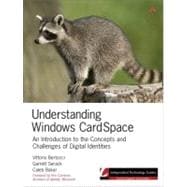
What is included with this book?
Vittorio has more than 13 years of experience in the software industry. He worked in the fields of computational geometry, scientific visualization, usability, business data, and industrial applications and has published articles in international academic industry journals. Vittorio joined Microsoft Italy in 2001 in Consulting Services. Before falling hopelessly in love with identity, he worked with Web Services and Services Orientation from its very inception, becoming a reference and a trusted advisor for key industry players nationwide and at the European level. In October 2005, he answered the call of Microsoft headquarters and moved to Redmond, where he lives with his wife, Iwona. Vittorio holds a Master’s degree in Computer Science from the Universita’ di Genova, Italy.
Garrett Serack worked as an independent software development consultant in Calgary, Canada, for 15 years, with clients in fields such as government, telecom, petroleum, and railways. Joining Microsoft in the fall of 2005 as the Community Program Manager of the Federated Identity team, Garrett has worked with the companies and the Open Source community to build digital identity frameworks, tools, and standards that are shaping the future of Internet commerce and strengthening the fight against fraud. In the summer of 2007, he transitioned to be the Community Lead in the Open Source Software Labs at Microsoft.
Garrett lives in Bothell, Washington, with his fantastic wife, Brandie, and their two amazing daughters Tea and Indyanna. Catch up on CardSpace and begin to learn more about Microsoft Open Source efforts on his blog at http://fearthecowboy.com.
Caleb Baker has been at Microsoft for the past seven years and is part of the Federated Identity team. In addition to building CardSpace, the team is working on the other pieces needed to build the Identity Metasystem. Caleb has been on the CardSpace product team since 2004 (InfoCard at the time). Since the first release of CardSpace, he has continued to work on future CardSpace products as well as various Identity Metasystem interoperability projects.
Before working on CardSpace, Caleb gained experience in the identity and security space by working on Active Directory and the Active Directory Migration Tool (ADMT). Caleb is a Seattle-area native, having graduated from the University of Washington with a degree in Physics and Political Science and has also earned a Master’s degree in Computer Science.
| Setting the Context | |
| The Problem | p. 3 |
| Hints Toward a Solution | p. 87 |
| The Technology | |
| Windows CardSpace | p. 169 |
| CardSpace Implementation | p. 223 |
| Guidance for a Relying Party | p. 269 |
| Practical Considerations | |
| Identity Consumers | p. 305 |
| Identity Providers | p. 323 |
| Index | p. 343 |
| Table of Contents provided by Blackwell. All Rights Reserved. |
The New copy of this book will include any supplemental materials advertised. Please check the title of the book to determine if it should include any access cards, study guides, lab manuals, CDs, etc.
The Used, Rental and eBook copies of this book are not guaranteed to include any supplemental materials. Typically, only the book itself is included. This is true even if the title states it includes any access cards, study guides, lab manuals, CDs, etc.